Technical Sessions
ENTERPRISE / WEB GIS (Speakers and Presentations)
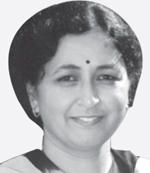
UMA SHAMA
Professor of Mathematics & Computer Science
Co-Director of GeoGraphics
Laboratory Bridgewater State University, USA
Presentation on:Demonstrating Real-time Web Mapping of Inter-regional Intermodal Passenger Transportation

Debajit Mishra
Scientist
Orissa Space Applications Centre
Presentation on:Development
of GOiPLUS for industrial and infrastructure development in Odisha state, India

Vishnu Boorla
Manager - Technical Services
Hexagon
Presentation on:Making Sense of the Dynamically Changing World

Neeraj Jain
Sr.Advisory Software Engineer
Pitney Bowes

Brian Nicholls
Executive Director
AAM Group
Presentation on:Extending Web GIS to the 3rd Dimension: Concepts and Case Studies

Shashikala KL
Manager
Bharat Electronics Ltd
Presentation on:Enterprise GIS and Interoperability in Defence
Big Data, Mobile & Cloud (Speakers and Presentations)

Prof Arup Dasgupta
Managing Editor
Geospatial Media & Communications

Raghavendran S
GM Technical - GIS
Pixel Softek
Presentation on:Small Things of Big (Geospatial) Data
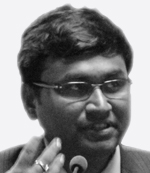
Dr. Kingshuk Srivastava
Assistant Professor
University of Petroleum & Energy Studies
Presentation on:Unstructured Data integration capabilities of GIS

Andrew Steele
Manager
Sales Engineering
DigitalGlobe
Presentation on:Unlocking Potential Through Geospatial Big Data
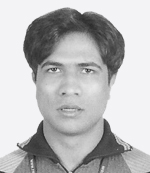
Mohammad Nasim
Research Scholar
Lingaya's University
Presentation on:To use the predictive power of BigData, MPD, Drone maping in disasters
3D Modelling (Speakers and Presentations)
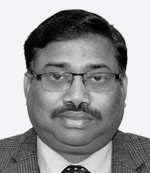
Dr Sameer Saran
Scientist/Engineer- SF & Head
Indian Institute of Remote Sensing

Nirmalya Chatterjee
Executive Director & COO
Trimble Buildings India

U.T. Vijay
Fellow
Karnataka State Council for Science and Technology

Hannu Korpela
Marketing and Sales Manager
Terrasolid

Rajeev Kundra
Senior Manager Business Development
Cyient
Presentation on:Benefits of 2D and 3D indoor maps to meet tomorrow's challenges

M Rajathurai
Technical Manager – Utilities and Mapping
Bentley

Judah Westby
Regional Manager, Teledyne Optech
Presentation on:Mobile Lidar Workflow for Transportation Asset Mapping

Brad Ysseldyk
Worldwide Sales Manager
Land Products
Applanix
UAVs (Speakers and Presentations)
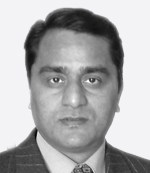
Dr Bharat Lohani
Professor
Indian Institute Technology
Kanpur

Mahesh Reddy
General Manager- Technical Services
Hexagon
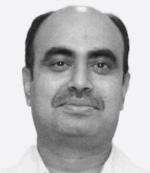
Dinakar Devireddy
Head
Innovation Program
Cyient
Presentation on:Operating UAV
Commercially in India – A USE CASE

Sunil Krishnan
Regional Sales Manager – Middle East
Africa and India
Trimble

Vipul Singh
Co-founder & CBDO
Aarav Unmanned Systems
Big data
The advances in geospatial data collection technologies such as satellite remote sensing, global navigation satellite systems, aerial surveys using photographic cameras, digital cameras, sensor networks, radar and LiDAR, Internet of things, is leading to exponential growth in volume of geospatial data. Big data, or the spatial data sets exceeding capacity of current computing systems, presents its own set of opportunities and challenges. This session will look at issues such as:
The session will focus on:
- Management of big data: the need for effective organization and distribution
- Big data analytics
- User case studies: How organisations are using Big Data to solve various challenges
Mobile & Cloud
Geospatial computing in mobile devices and in the cloud are the fast growing trends that are changing the face of GIS and significantly contributing to the ubiquity of geospatial technology, making it a part of everyday work and taking it to a wider user base. With its ability to serve vast volumes of real time data, mobile mapping, processing and data management can empower companies in an unprecedented manner to enhance their efficiencies. Cloud is furthering this process. Data can be collected in the field using mobile devices and then transmitted to cloud-based servers for further processing and ultimate storage. Geospatial information can also be made available to connected mobile devices via the cloud, allowing access to vast databases of geospatial information anywhere where a wireless data connection is available.
The session will focus on:
- Geospatial data management including real-time reporting in a mobile environment
- Integrating mobile and analytics into the cloud for geospatial data management
- Demonstration of the benefits of mobile and cloud geospatial computing by organisations
Web GIS
The internet is emerging an economical and easy way of disseminating geospatial data and processing tools. Not only does the dissemination of spatial information on the Internet improves the decision-making processes, it can also work out the traditional issues of GIS systems such as high costs and the enormous software developer efforts on upgrading the system. Web GIS is evolving from different Web maps and client-server architecture to distributed ones. Successful Web GIS implementation depends on a number of factors, hinging on the available technology and the application requirements.
The session will focus on:
- The criteria for successful Web GIS implementation
- Its implementation by government in delivering services a
- Emerging technology trends in Web GIS.
Enterprise GIS
An enterprise GIS, or organisation-wide GIS implementation, is ushering in a new wave of geospatial implementation by improving access to geographic information across an organisation and extending geospatial capabilities to non-traditional users of GIS. Such enhanced access to geospatial information by more and more users significantly spurts productivity, along with its integration with the Office and IT tools. An enterprise GIS is key to improved business workflows since it applies the geographic approach to relate legacy and new information for better decision making; greater efficiency with money, time, and resources; and more effective communication, for all sectors of social and economic development as well as business enterprises.
This session will focus on:
- Increasing overall operating efficiency of an organisation using GIS
- Establishing an enabling framework for enterprise GIS implementation
- More timely access to better information through enterprise GIS
- Improving capabilities of other enterprise systems by leveraging the value of geographic information
- The significant increases in productivity and overall effectiveness with enterprise GIS
3D Modelling
3D representation of buildings, projects, structures, situations created from airborne, UAV, mobile and terrestrial laser scanning data and corresponding geospatial images help in visualisation that can eradicate costly mistakes, reduce unforeseen changes and facilitate efficient planning. The session "3D modelling" will focus on:
- Innovations in 3D visualisation
- Emerging applications for 3D modelling
- Convergence with other technologies
Sensors
Technologies for geospatial data capture are fast evolving, driven by innovations in equipment manufacturing and user needs, opening up newer opportunities and uses of geospatial data. Such evolutions, are taking further geospatial information as a decision support system. This session will focus on:
Session focus areas:
- Technological advancements in sensors
- Exploring the growing importance and applications of sensors in monitoring and management of various industries
- Expert views and case studies on sensors and its related challenges
UAVs
With the increasing demand for timely, accurate, high-resolution data for mapping, exploring, investigating and monitoring natural resources as well as assets on the surface of earth, UAVs are fast emerging as a preferred platform for imagery data collection. Reductions in the cost of hardware required to fabricate and maintain UAVs, the advances in sensor and camera technologies, along with the availability of light and long-lasting power packs, are making mass production of UAVs possible and it is finding application in diverse areas.
Session focus areas:
- Technological advances in UAVs
- UAV benefits
- Geospatial solutions made possible with UAVS
- Emerging applications with UAVs
LiDAR
With its advanced technology, high accuracy, its ability to cover vast amounts of area at one go, less time for data collection and processing, LiDAR is fast revolutionising geospatial data collection. Such data availability is enhancing geospatial data applications in several areas while also fuelling new applications
Session focus areas:
- Technology advancements in geospatial data collection with LiDAR
- Applications of LiDAR in various sectors
- Experts views and case studies
Internet of things
The Internet of things, or the network of physical objects sensed and controlled remotely across existing network infrastructure, is becoming a reality. Location of these “things”, along with identity and status, is at the core of this concept. These details can make the things become active participants in our lives and business processes, and even act autonomously on our behalf. IoT is headed towards redefining the geospatial industry dynamics by connecting the digital information world and the real world through sensors and geospatial data becoming omnipresent.
Focus areas:
- Role of location in tracking and controlling the interactions
- Business opportunities
- The convergence of geospatial information with other information
- The benefits and applications
Emerging applications and technologies
Technology advancements are causing a sea change in the process of generating, managing, providing and analysing geospatial information. The use of geospatial information is rapidly increasing. The increasing ubiquity of geospatial information is driving a wide range of innovative, new applications that are contributing to its pervasiveness in everyday decision making – from life-critical information to lifestyle information and everything in between. The session "Emerging trends & technologies" will focus on such technology advancements as well as the emerging applications on the geospatial horizon.